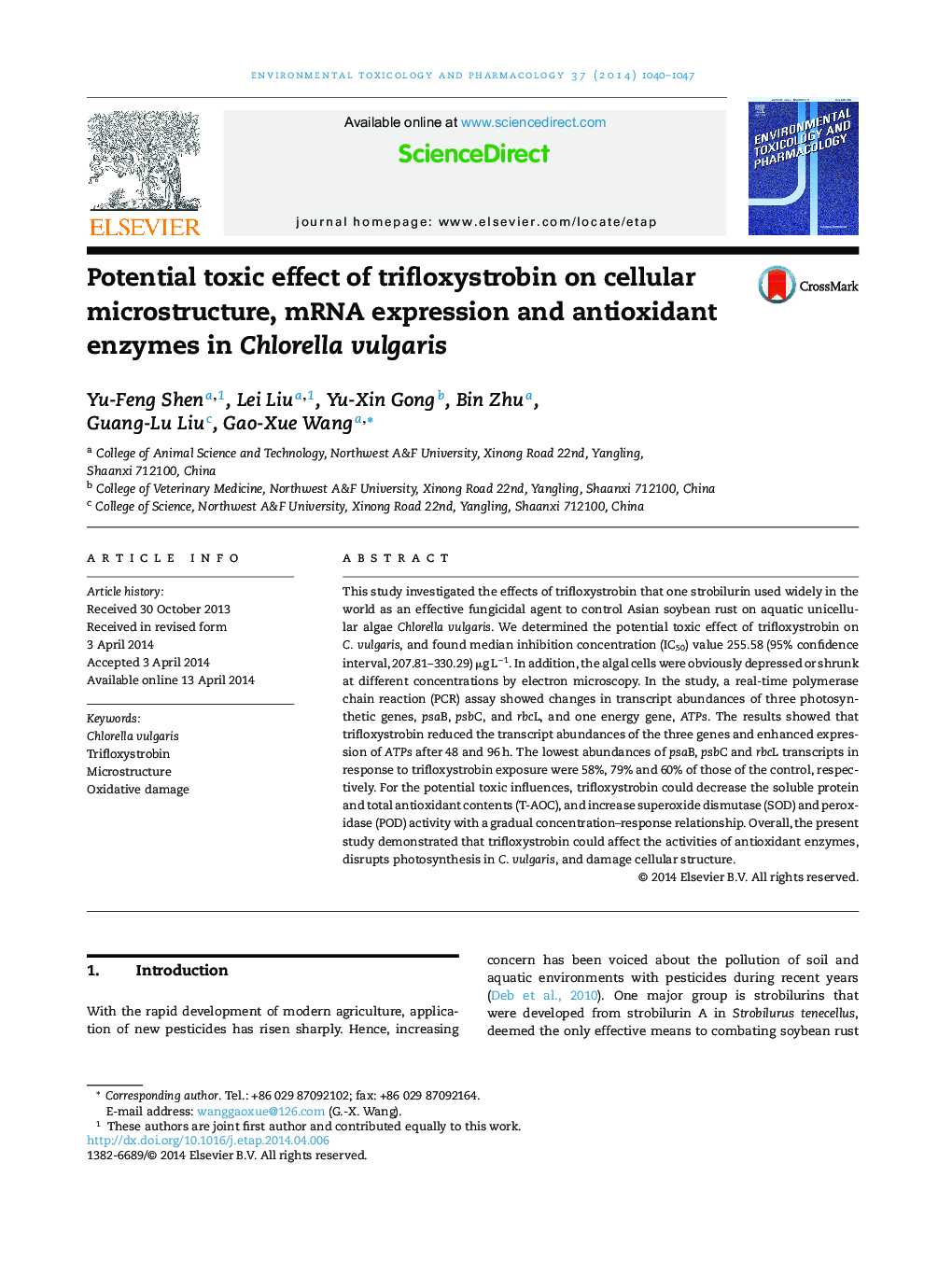| Article ID | Journal | Published Year | Pages | File Type |
|---|---|---|---|---|
| 5849112 | Environmental Toxicology and Pharmacology | 2014 | 8 Pages |
â¢Trifloxystrobin can inhibit the growth of Chlorella vulgaris.â¢Trifloxystrobin may influence cell membrane permeability.â¢The photosynthesis-energy-related gene expressions are changed.â¢Antioxidant enzyme activities were decreased.â¢Increase of oxidative stress in algal cells.
This study investigated the effects of trifloxystrobin that one strobilurin used widely in the world as an effective fungicidal agent to control Asian soybean rust on aquatic unicellular algae Chlorella vulgaris. We determined the potential toxic effect of trifloxystrobin on C. vulgaris, and found median inhibition concentration (IC50) value 255.58 (95% confidence interval, 207.81-330.29) μg Lâ1. In addition, the algal cells were obviously depressed or shrunk at different concentrations by electron microscopy. In the study, a real-time polymerase chain reaction (PCR) assay showed changes in transcript abundances of three photosynthetic genes, psaB, psbC, and rbcL, and one energy gene, ATPs. The results showed that trifloxystrobin reduced the transcript abundances of the three genes and enhanced expression of ATPs after 48 and 96 h. The lowest abundances of psaB, psbC and rbcL transcripts in response to trifloxystrobin exposure were 58%, 79% and 60% of those of the control, respectively. For the potential toxic influences, trifloxystrobin could decrease the soluble protein and total antioxidant contents (T-AOC), and increase superoxide dismutase (SOD) and peroxidase (POD) activity with a gradual concentration-response relationship. Overall, the present study demonstrated that trifloxystrobin could affect the activities of antioxidant enzymes, disrupts photosynthesis in C. vulgaris, and damage cellular structure.
